Shovelful of Love
I’ve owned, broken, loved and hated about 15 different avalanche shovels over the years and admit to being very opinionated about them. Shovels aren’t rocket science and I can usually tell if I’m going to like a shovel or not just by deploying it and shaking it like a baby rattle. If it is loose, janky and unbalanced, it is only going to get worse with time as the very nature of shoveling causes wear, tear and loosening of the joints. At the very least, shovels need to have a telescoping handle, a largeish blade, semi-flat back, strong shaft to blade ferrule, square shoulders so your foot doesn’t glance off and be made out of high quality material, which currently means 6061 T6 aluminum. Handle configuration (D vs. T), rescue sled slots, thingies that fit in the shaft, pivots, curved shafts and storage containers are all distance considerations for me. Weight and cost are also secondary considerations as similar shovels all weigh roughly the same and the price difference between a good shovel and a bad one is maybe $40 dollars – not a huge difference in itself, especially considering a good shovel will outlast three bad ones.*
With all this in mind, I was thrilled to read an independent report put out by the Austrian Alpine Club which came to the same conclusion. They tested ten different shovels and gave top honors to three Voile models and the G3 AviTech, which has been my shovel of choice for the last six years. My AviTech has started to loosen up a bit and recently I crushed and cracked the top edge in a fit of impatient cook tent excavating, so was thinking about replacing it when a new shovel from K2 appeared out of nowhere. I didn’t even know K2 was making shovels, but they scored a bullseye with this one, although I don’t think it will be available until Fall 2011.
Nothing too fancy – a nice extendable handle, deep shovel blade, high quality materials and tight tolerances. The scalloped leading edge on this shovel is a nice touch – it stabilizes the penetration point(s) without going to a spade tip, which is too weak.
The plastic end caps are nice for keeping snow out, and if you are a weight geek, they can be removed. Ovalized or asymmetrical shafts are a bit easier than circular to orient and can be stronger. I also really like the flush ferrule on this shovel (also on the G3 AviTech) as it fits into packs easier than those with the extended ferrule.
Job #1 for an avalanche shovel – holding a wad of snow. Shallow blades initially hold snow, but when you go to throw it, most of it spills off the sides and back into your pit, which is a pity. (<– sorry, low hanging fruit). A nice flat back makes it far easier to cut clean pit walls.
I don’t understand why any shovel design would NOT use squarish shoulders like this. Digging with your arms in soft fluffy powder is a nice cubical-farm fantasy, but the reality is that avalanche shovels need to be able to cut through windjack, set-up avalanche debris and all sorts of hard snow. To do this, you need to stomp on it. To stomp you need beef and a striking surface.
Hoe-mode ain’t just fo beotches anymore, you can now do it with a few shovels. According to avalanche rescue studies, once you have located the victim with a probe strike (this counts me out…) the best way to excavate them is to dig in a V-shaped pattern below them such that you come to the body almost from the side, and for this, hoe-mode trenching is faster. For me, it is a secondary consideration, but a nice feature to have.
* That said, not only did the Voile Telepro T6 shovel get high marks, at $48 it is one of the most affordable.
________________________________
Help support StraightChuter.com and stomp your brains out with a Voile Telepro T6 Shovel from Backcountry.com. Click on the photo below…
Category: Random

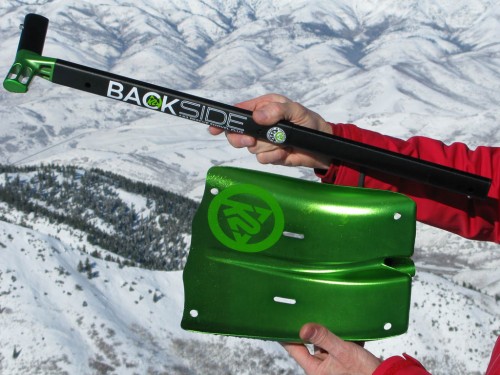
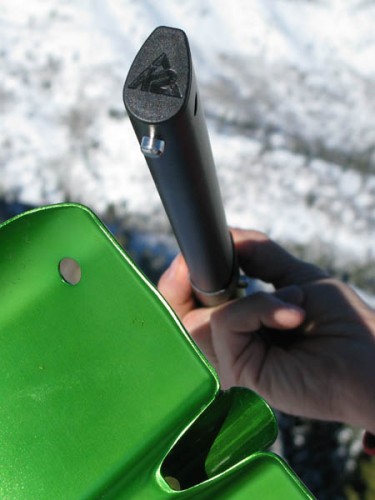
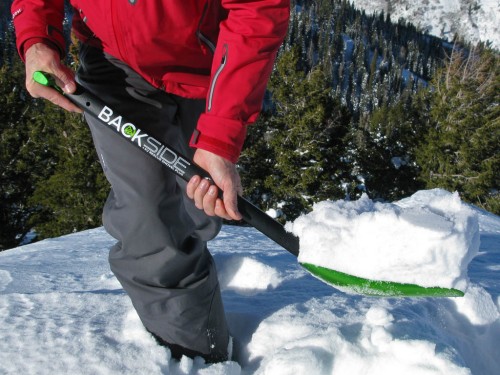
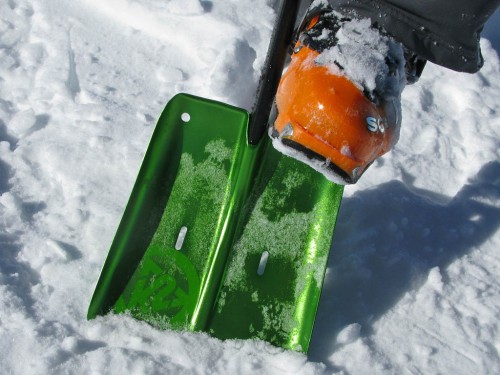
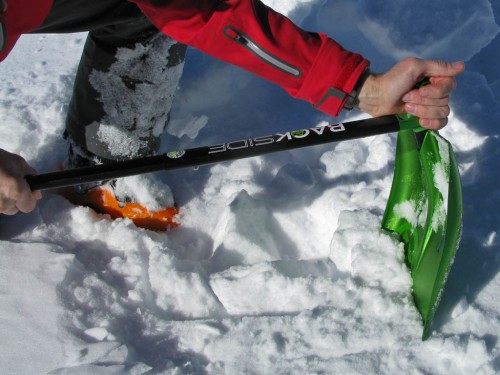
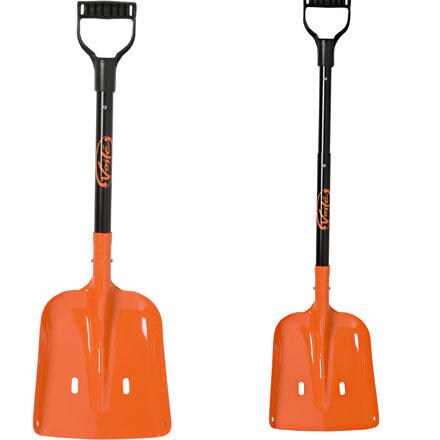








The handle looks like it has a pop-pin on it. I wouldn’t notice it in an avi situation, but building a kitchen/shelter etc possible blister maker?…Any thoughts?
R_Train – hmmm, I hadn’t noticed that, but it could. I guess if it really bothered me for extended shoveling I’d pull it out.
i don’t have what you’d call strong feelings about shovels.
but i LOVE the word “janky.” thanks for introducing me to it.
Hi dug – janky is the present tense of “jingus” as in “The jingus design snapped when I tried to shovel out my tent.”
Nice review of the K2 shovel, I’ve been a firm believer in having the strongest shovel you can, which is why I have the voile telepro. That being said this one looks good; another one that catches my eye is the Brooks Range sharktooth shovel with it’s serrated edge – have you ever had a chance to work with that one and what did you think of it?
Lee – I’ve seen photos and samples of the Brooks Range shovel, but never actually used it. For me, shovels are a bit like beacons – I find one I like and then hang on to it for a long time (years?) if there is no real reason to change it. I like new gear, but once I find something that works, I stick with it.
The sawtooth pattern looks like it would be a pain for smoothing pit walls for testing, if you’re into that sort of thing. However you could tow it behind you to groom the slope for your partner.
I’ve used the Life-Link beefcake shovel for years but am just now trying out BD’s offerings.
Amazing how companies manage to get people to buy new probes and shovels all the time. How much more innovation is possible with a probe pole? Apparently a lot.
Outside likes it…with Mike Hattrup…
http://outside-blog.away.com/blog/2011/01/outdoor-retailer-k2-rescue-shovel.html